PRODUCT SPOTLIGHT
This spotlight is a little different than most. It's not something your can buy (usually), but something you can make.
Recently, I came into possession of what appeared to be a quite old Dietz kerosene lantern. It seems that a friend found the lantern in the trash can of a neighbor. Knowing my fascination with lanterns, he grabbed it and brought it over. My first reaction was that it wasn't worth keeping, but I looked deeper and was thrilled that I did.
There is an interesting similarity between collectors of old Coleman lanterns and collectors of old Dietz lanterns. Like Coleman lanterns, there is also a lot of interest and information for Dietz kerosene lanterns. Once I realized that a unique Dietz lantern had been dumped in my lap, I decided to bring it back to life.
A little history of Dietz lanterns. They began making lanterns about 1842 and have been making them ever since. The company began life as a New York business, as this was the home of its founder, Robert Edwin Dietz. Due to an ingenuous design, high light output, excellent quality, reliability, and durability, and a price that just about anyone could afford, Dietz lanterns quickly became the most popular source of light in the world.
Long before the recent trend of sending production facilities to China, the Dietz Company decided, in 1956, to relocate its production facilities from New York to Hong Kong. Prior to that date, all production took place in the USA. Dietz still manufacturers these same lanterns today, but imports them to the USA and all over the world.
The history of the Dietz Company is fascinating and for those interested, the best place to look is the W.T. Kirkman Lantern website at
http://www.lanternnet.com/history.htm
As you will see below, it was the country of origin that made my new found lantern so interesting and unique.
Here is the lantern, almost exactly as I received it, and it was clear that the lantern had been neglected. Just about every exterior steel part was badly rusted, the fuel tank leaked, and most of the paint had either worn off or rusted away. Thankfully, and surprisingly, the globe remained intact.
Beneath the rust, in raised letters on the fount, was the model, "The Little Giant." Directly below the name, also in raised letters, was a designation reading, "70 Hour Fount Capacity," meaning that with a full tank, the lantern would last 70 hours.
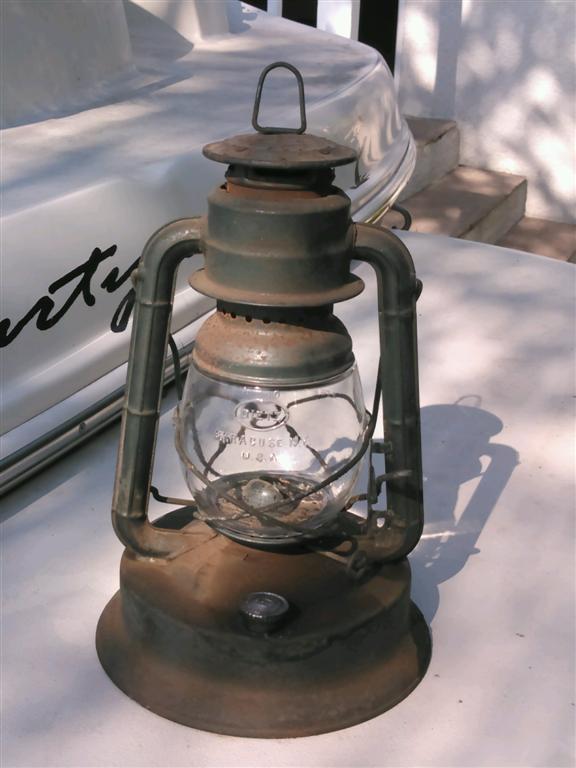
- Dietz 5 (Large).jpg (47.12 KiB) Viewed 934 times
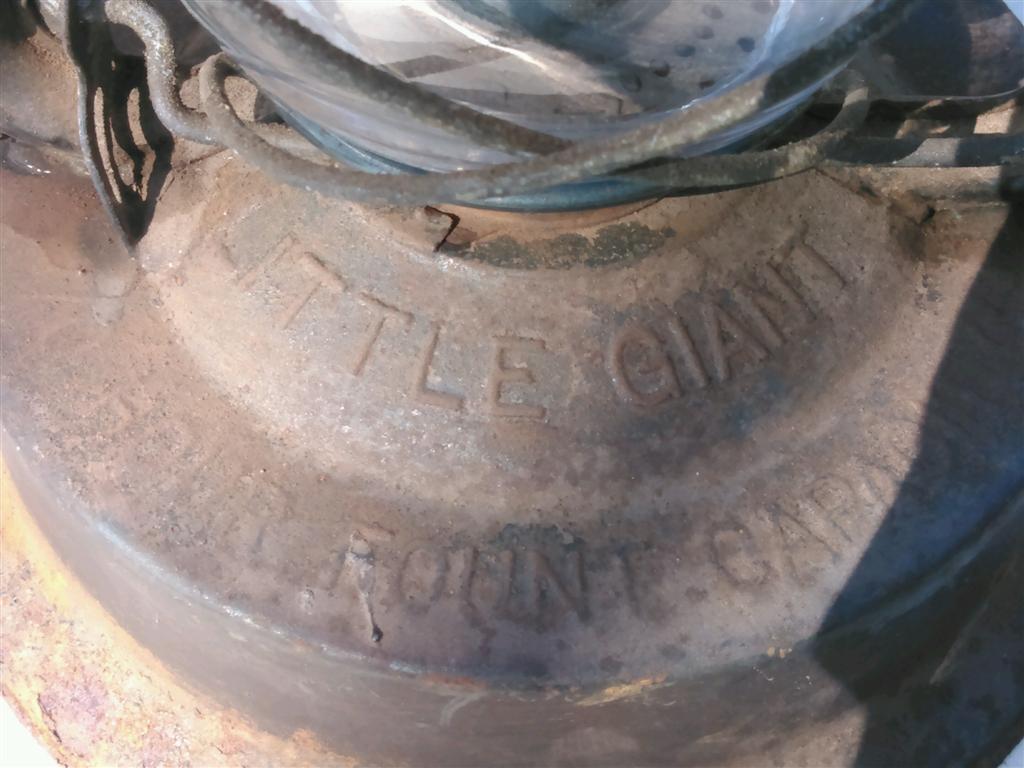
- LR-7.jpg (84.58 KiB) Viewed 934 times
So, I cleaned the globe, filled the tank with kerosene, waited for the wick to soak it up, and lit it. Despite the rust, the neglect, the old wick and the leaking fount, it performed like it was new.
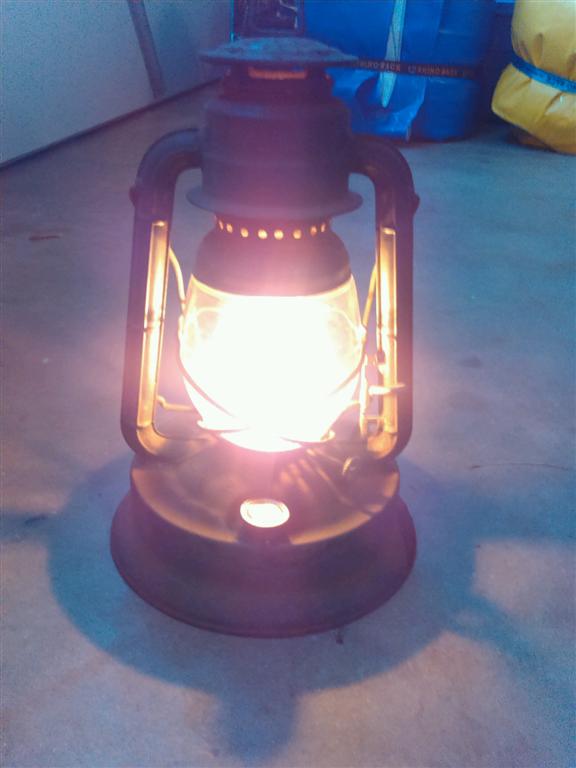
- Dietz 3 (Large).jpg (35.84 KiB) Viewed 934 times
While this was enough to pique my interest, it was the subsequent discovery that really made me dig in. Underneath the rust and dirt, it became apparent that this lantern was made in the USA.
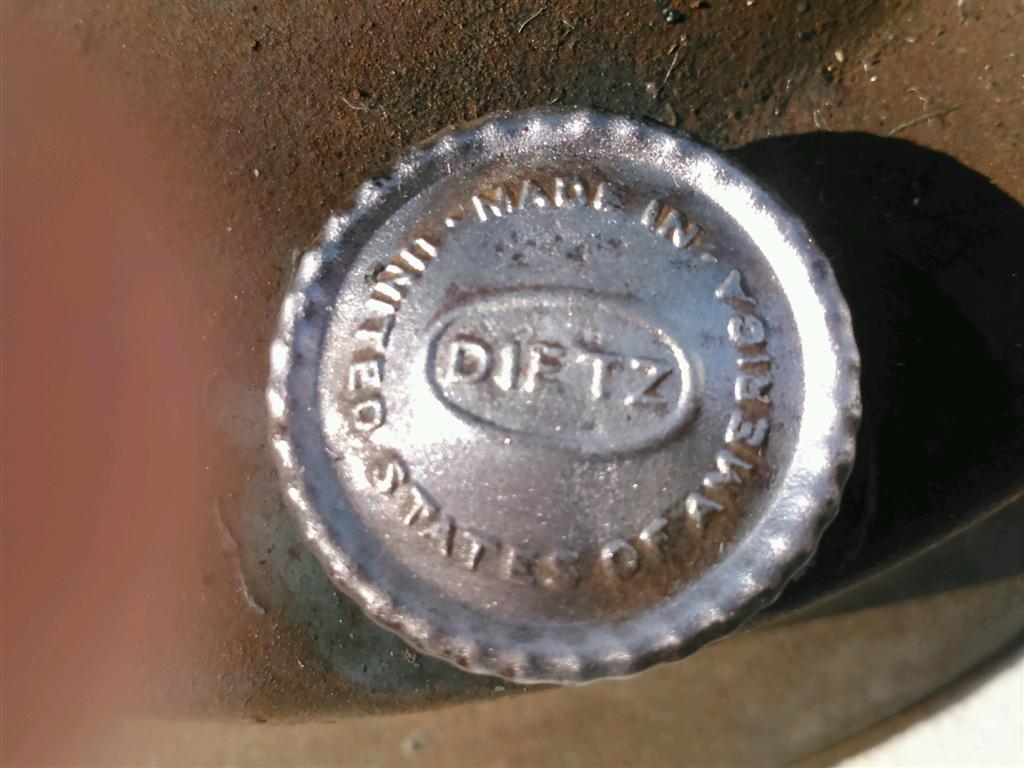
- Dietz 4 (Large).jpg (84.6 KiB) Viewed 934 times
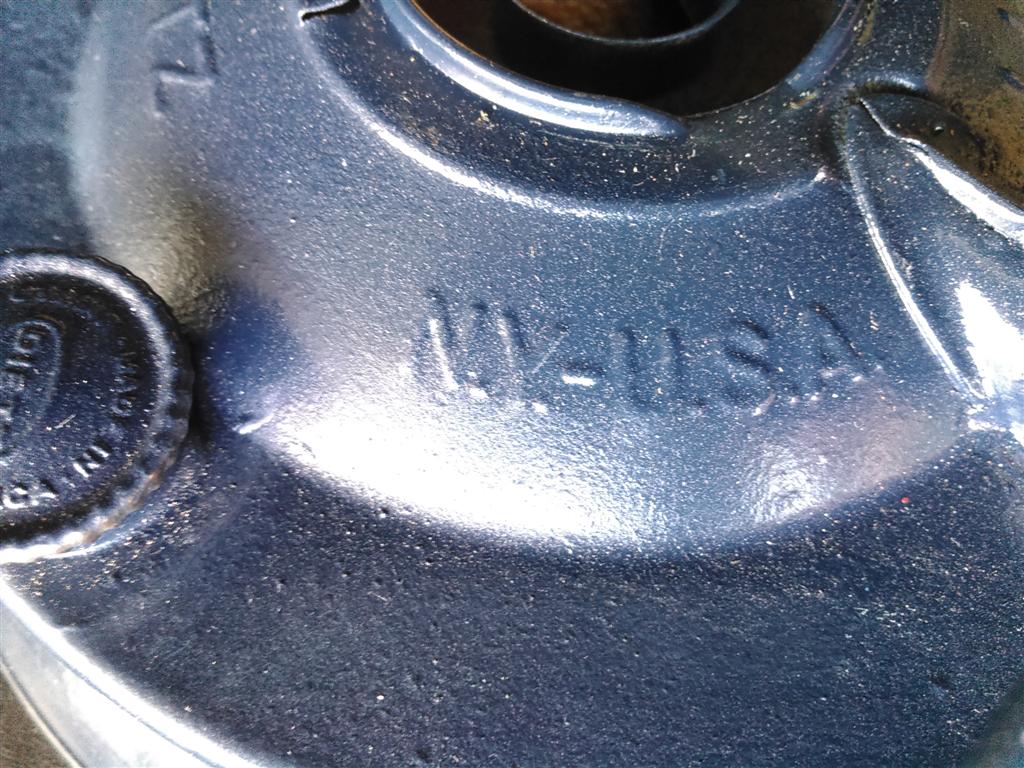
- LR-26 (Large).jpg (183.98 KiB) Viewed 934 times
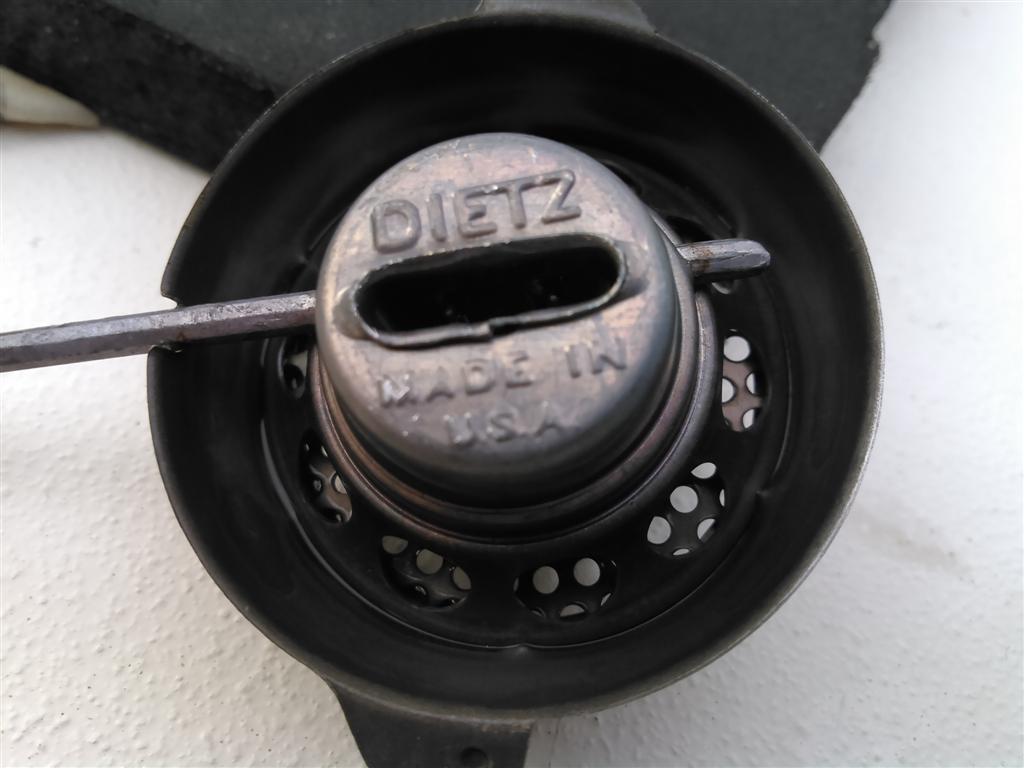
- LR-14 (Large).jpg (72.2 KiB) Viewed 934 times
In addition to the Syracuse, N.Y. U.S.A. designation on the globe, there is also other manufacturing information in the photo below. Directly above the Dietz name there the letter H followed by the number 10. This alpha-numeric code, found on most Dietz lantern globes made before 1956, designates the manufacturer and mold number. In this case, the globe was made by the Anchor Hocking Company, also of New York.
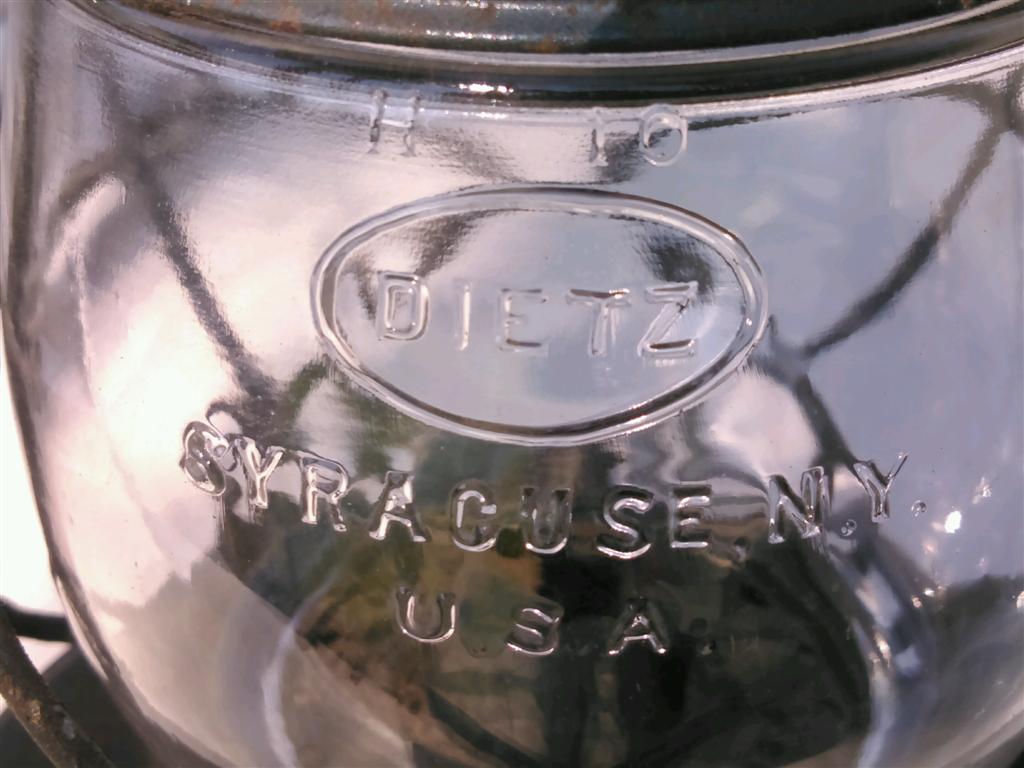
- LR-8.jpg (79.03 KiB) Viewed 934 times
Based on this, there was no doubt that this lantern was made sometime before 1956, in the USA, making it at least 62 years old. But I had to know more! Apparently, similar to Coleman, Dietz stamped the date of manufacture on their lanterns. Barely visible on my lantern, under some rust, I located some very faint printing on the location where the date stamp was to be found. Unfortunately, despite the removal of rust, the exact date of manufacture was not legible.
So, I contacted Woody Kirkman and provided him with pictures of the lantern, and a request to help with a date of manufacture. I lucked out, as there was enough original paint left on one portion of the lantern for him to recognize that this color was only used between 1950 and 1952. That was enough for me. I now knew that my lantern was between 66 and 68 years old.
Using information on the Kirkman website, I began the restoration. The first step was getting rid of the rust, which is ALWAYS a PITA process, so I decided to use Kirkman’s advice by submersing the lantern in a solution of molasses. It sounded weird but it was better than the elbow grease alternative and it could get into small places where I couldn’t. Surprisingly, it did a pretty good job, but for some areas, not good enough.
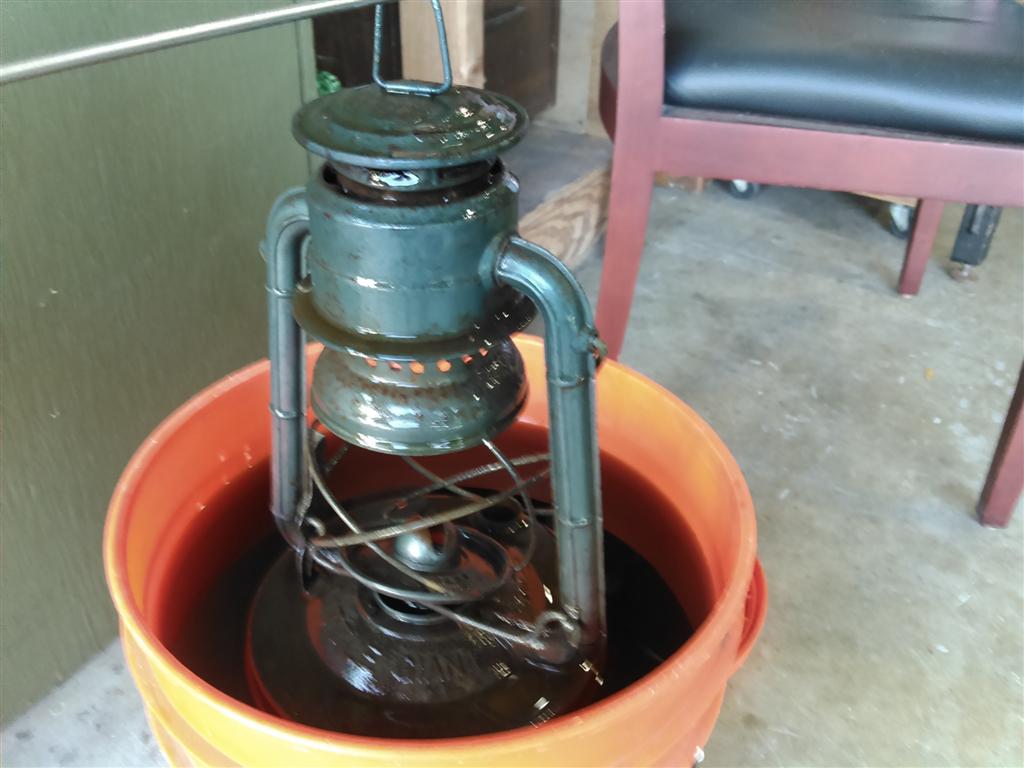
- LR-18 (Large).jpg (86.21 KiB) Viewed 934 times
One of the benefits of this project was the discovery of two amazing products, both made by POR 15. The first was a rust remover, that worked like nothing I have seen before. Soaking parts in this solution amazingly removed the rust, leaving behind a clean steel surface. Here is a before and after picture of the lantern burner, using POR 15.
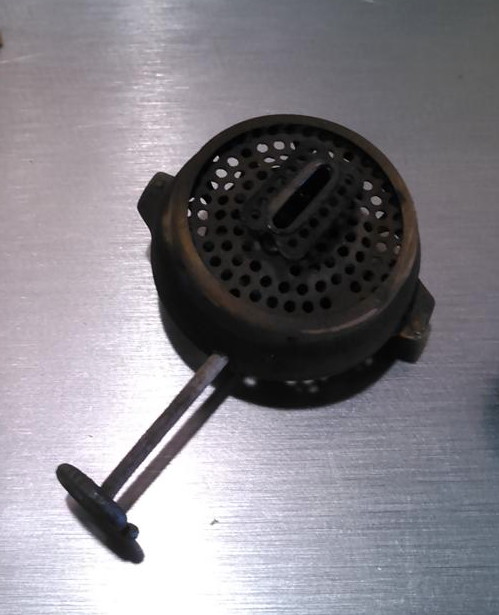
- LR-178-1 (Large).jpg (64.22 KiB) Viewed 934 times
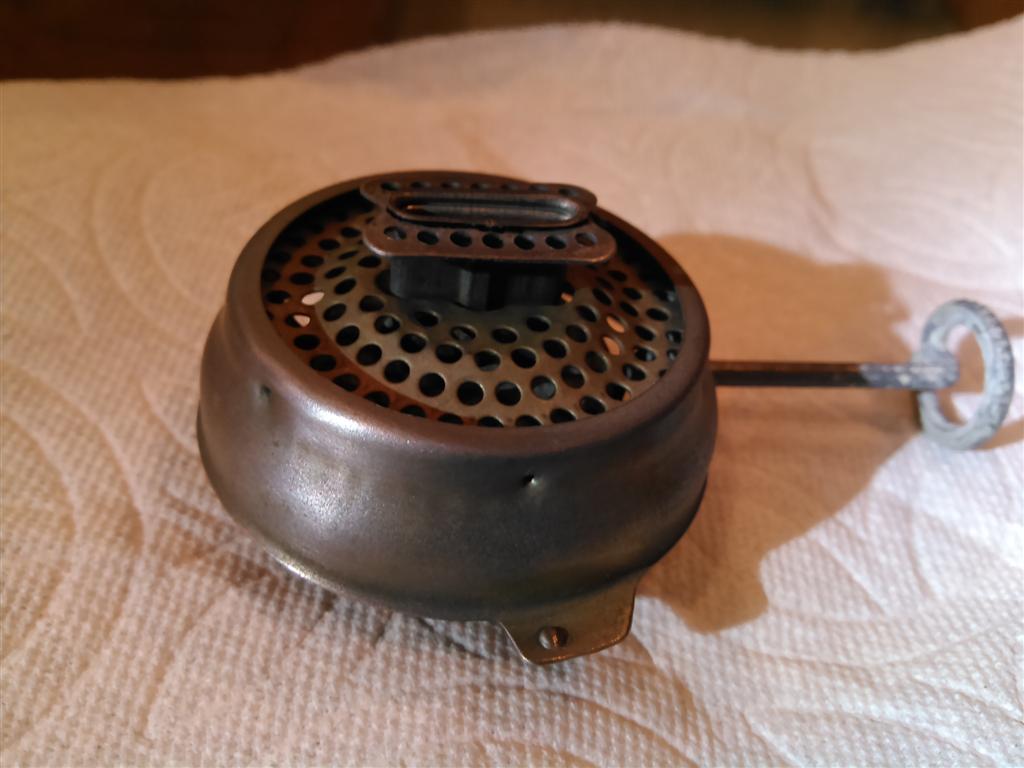
- LR-13 (Large).jpg (80.59 KiB) Viewed 934 times
The next phase involved the leaking fount. In my case, the leak was large, so my first line of attack was to re-solder the seam using a using a micro butane torch. This may work for some, but for me, it just made the leak worse. So, it was time to put plan B into action - using POR 15 liquid fuel tank sealer. AMAZING STUFF!!! The only noteworthy thing is that this sealer requires 8 days to fully cure. Once sealed, it is good for the life of the tank.
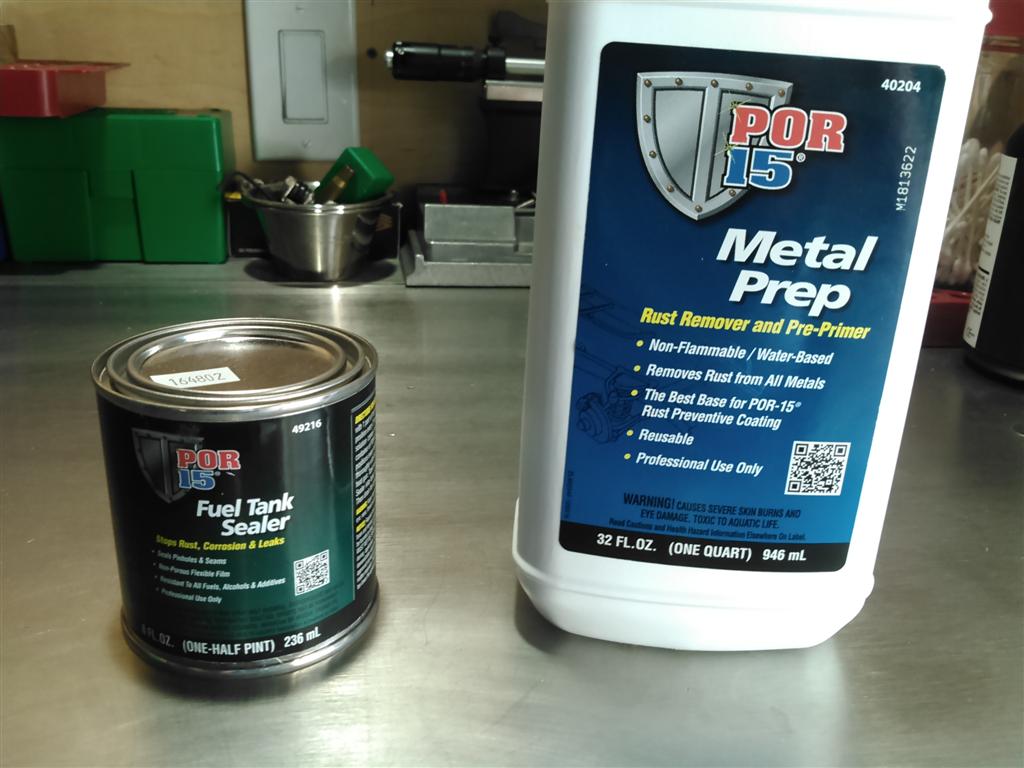
- LR-15 (Large).jpg (101.11 KiB) Viewed 934 times
With the rust removed and the tank sealed, it was time to paint. Below is the final product, and although it is not a “like new” restoration, it is pretty close. Yes, there is some rust pitting and my painting skills could use some improvement, but it is attractive, fully functional, safe to use, and I now have one of the last Dietz kerosene lanterns made in the USA. And, the lantern is all original - no replacement parts were used (except paint.)
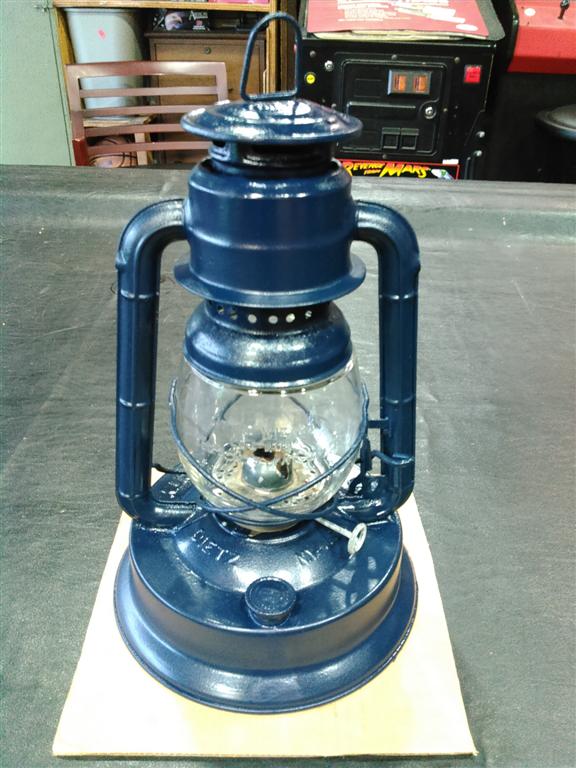
- LR-12 (Large).jpg (90.12 KiB) Viewed 934 times
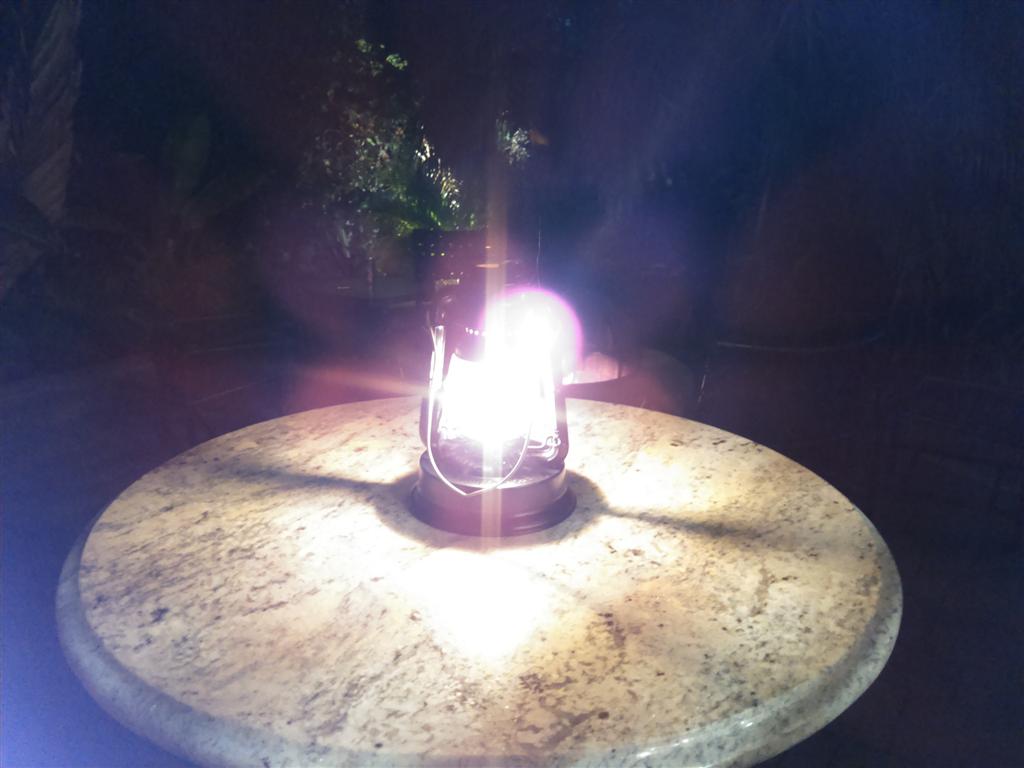
- LT-20 (Large).jpg (71.11 KiB) Viewed 934 times